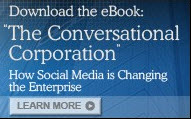Uncategorized
The Real Story Behind the Royal Wedding
The buzz around the royal wedding is in full force, with traditional and social media outlets around the world writing, posting, blogging and tweeting all the latest news about William and Kate. We wanted to see exactly what the coverage looks like, so our Media Consultants used Dow Jones Insight to take an in-depth look into the media around the prestigious event. Click here to read the Official Royal Wedding Report: Part One brought to you by Dow Jones Insight. For a quick view, we put together some interesting charts for our loyal readers below. Be sure to circle back post-wedding for Part Two to see what captured the most interest during the wedding and what issues pop up next for the royal couple.
Thoughts focus on the royal family and attendees, and where to tune in for coverage on the wedding.
While the media has steadily reported on the royal family over the last several weeks, the absence of Princess Diana has clearly attracted increased attention and will likely continue to be an overwhelming topic post-wedding as comparisons of Kate’s future to Diana’s past will be on the minds of many observers.
Mentions of YouTube as it relates to the royal wedding jumped nearly 1200% in a week, with reports on the BBC providing a feed of the wedding on YouTube, and T-Mobile’s royal wedding spoof ad going viral. YouTube, Facebook and CNN were also among the most active topics to pop up in the last week as reports provided updates on where to go for the latest wedding information and day-of-the-event coverage.
With the recent release of the guest list, scrutiny over the attendants and the absent gained traction, with Elton John and David Beckham generating 600% more coverage from the previous week, and Prime Minister David Cameron increasing by 76%. Rowan Atkinson was a surprise guest for many in the media, spiking up by over 1500%.
Analysis by Emi Nakatsugawa, Media Consultant at Dow Jones. emi.nakatsugawa@dowjones.com
Commentary from the Social Media World Forum in London, UK
In mid-March I attended the Social Media World Forum in London, Europe’s leading SM event. The organisers offered a variety of informative workshops that covered a number of topics including SM engagement and how to measure and evaluate ROI, direct marketing in SM, and SM tools.
SM agency Yomego presented their SM Reputation Index based on 4 metrics (noise, noise recency (takes into account how recent were the entries), sentiment and sentiment recency). Four scores are calculated for each entry on the blog or forum, and then aggregated to provide a total score (out of 100). The audience enjoyed guessing the scores for the leaders of the British parties just ahead of the general elections. Though some guesses were quite close, no one predicted that leader of the Liberal Democrats Nick Clegg would come first, as David Cameron fell behind because of “recency of noise” component and Gordon Brown was let down by the “sentiment”.
At Dow Jones, we also recommend looking at various metrics to determine what’s really being said in the news. The chart below compares overall media mentions of the three candidates in the news, against the topics of discussions. As you can see, while Gordon Brown clearly led in terms of overall coverage, this lead was driven largely by two issues: the economy, and Afghanistan. On other issues like immigration, the debate has been more evenly matched.
Another interesting idea was presented by OOYALA, the company that is pioneering video in SM. They offered viewers of Tony Blair’s Iraq enquiry on telegraph.co.uk an option to show whether they trusted what Blair said by moving the cursor from very positive to very negative. Later they used the scores to analyse people’s attitudes and perceptions.
The speakers agreed that there were no universal metrics for the social media, and companies need to have a clear understanding of what they aim to achieve by measuring SM presence. There are still many problems facing SM measurement specialists: inefficiency, governance (correct content, location and time) and analytics (difficulty in measurement against company goals). Automated favourability error could be as high as 35%. Therefore, it is really important to determine the strategy for SM engagement and ways to be transparent, monitor, listen and respond.
Elena Sokolova is a Media Consultant with Dow Jones, based in London, UK.
Read Full Post | Make a Comment ( None so far )Tiger scandal follows Clinton trajectory…
Is Tiger the new Bill? Using Dow Jones media measurement tools, we compared media coverage of the current Tiger Woods scandal against five other indiscretions to see how long the golfer might expect his name to stay in the news for something other than golf. We looked at news mentions of Tiger Woods, David Letterman, Mark Sanford, Eliot Spitzer, and Bill Clinton in the months their scandals hit the news, the preceding three months to get an idea of “normal” coverage, and for six months after to see how quickly the scandals died down.
Of the five, New York Governor Eliot Spitzer had for the most dramatic rise in March 2008 when his sex scandal broke. Coverage increased a whopping 158% compared to his average volume of news in the three previous months. The scandal just as dramatically fell off the media’s radar, with a 171% drop in coverage in April.
Remember South Carolina Governor Mark Sanford’s dalliance in Argentina? Sanford experienced the second largest increase in coverage when it was reported he went “hiking the Appalachian Trail” in June 2009. However, in July, his coverage dropped only 20% – it took Sanford about 5 months to see the same proportional decrease that Spitzer experienced in his first month following the crisis (fast forward to the present and Sanford is back in the news recently as his wife has filed for divorce).
David Letterman’s scandal, if you can even call it that, is the biggest success story – news of sex with female coworkers received about the same amount of play as Sanford’s affair. Compared to a Southern governor, you’d expect much more from a scandal involving a celebrity national talk show host – just one more piece to the growing body of support for Letterman’s handling of the issue. His coverage only bumped up 70% in October 2009, quickly falling 99% in the first month following the scandal.
Tiger? Well, he certainly didn’t pull a Letterman out of his golf bag. Tiger’s trajectory is starting to look far more like that of former President Bill Clinton. When rumors first broke of the Monica Lewinsky scandal in January 1998, mentions of Bill Clinton increased at a similar level to Letterman. The problem for Clinton is that it didn’t go away – coverage of the scandal stayed pretty constant for the next 6 months. Tiger’s coverage rose 78% in November 2009; a considerable increase considering the scandal only broke around November 21. In the first two weeks of December, coverage of Tiger Woods is already 44% higher than in November.
With recent news about sponsors like Accenture dropping Tiger, coverage of this scandal isn’t likely to go away anytime soon either. Just don’t tell us it depends on what the definition of “is” is, Tiger.
Read Full Post | Make a Comment ( 2 so far )For Social Media, it’s all about Facebook – or is it?
Or: You can’t outsource your communications strategy!
Lately studies showed that Facebook (FB) is now the world’s largest Social Media network – so an easy decision on where to put your resources and start your organization’s Social Media initiatives? Well, many of those articles announcing FB as the winner only looked at a handful of ‘global’ networks (e.g. Myspace, Friendster). So yes, in absolute terms, FB is bigger than the likes of MySpace. But does that actually matter? Maybe – because it is easy to focus on simply one platform or network to effectively use your resources to achieve your communications or outreach objectives.
Talking about this: if your target market is Korea, maybe you should rather look at Cyworld; for China – don’t ignore Xiaonei/Renen, Kaixin or 51.com; in Japan, better consider Mixi (sidenote: did you know that over 50% of users access the service via mobile devices?)… Or if Twitter is the buzz you want to follow – have you considered that in China alone there are four very popular local Twitter-like services (some would call them ‘clones’)?
While there is actually some consolidation going on, Social Media is by definition actually a very native language driven affair. Chinese is currently the 2nd most popular internet language. If you consider the relatively low level of internet penetration in China today – then Chinese can actually be expected to become the number one online language within the next months or latest years in terms of pure volume of virtual communication (e.g. through messengers) or content (e.g. blogs, forums).
Looking just at these few indicators, it is quite obvious that there is unfortunately no one-dimensional answer when it comes to which social media channels would be the best for your organization’s engagement plan. Very old-school like, it goes back to the drawing-board to ask yourself: what are your objectives, your target audience and your resources before blindly jumping on the Social Media wagon.
Of course it is important to outsource parts of your tactics and advice – and leverage others’ expertise and experience. But still every organization’s chief communicator has to decide on the direction – both for online and offline. For that, decision makers need to build inhouse capabilities – because you can’t outsource strategy!
Lars Voedisch – @larsv
Read Full Post | Make a Comment ( None so far )








